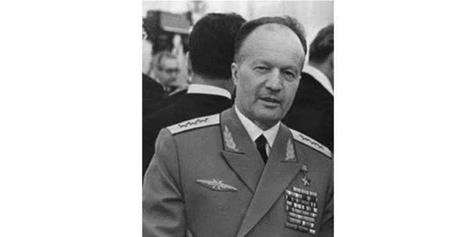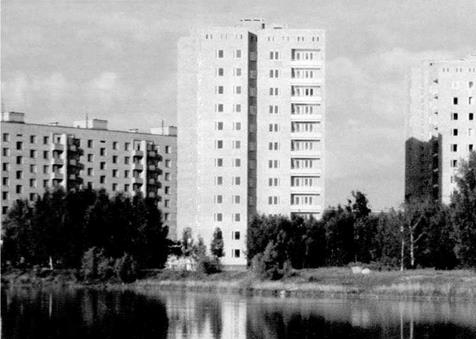DOS-1 crews
STAR TOWN
Zvyozdniy Gorodok (Star Town), home of the Cosmonaut Training Centre (TsPK) where Soviet military cosmonauts live and train for space missions, is located in a wood of 100-year-old birch trees in the Shchelkovo area about 40 km northeast of Moscow and 10 km east of Kaliningrad.
In 1958 General Nikolay Kamanin became Deputy Chief of the Soviet Air Force. He was responsible for the selection of all military cosmonauts, their training and nomination for space missions. He was also on the military commission that decided to build Zvyozdniy, and when construction started in the early 1960s all decrees relating to its development required his signature.
Kamanin maintained a good association with his boss, Commander of the Air Force Marshal Konstantin Vershinin, but his relationship with Sergey Korolev was often tense. They got on well during the years of the Vostok flights, but in 1963 OKB-1 set out to modify this capsule to carry up to three cosmonauts and this led to a conflict. Kamanin wished the Voskhod cosmonauts to be drawn exclusively from the Air Force, as in the case of Vostok, but Korolev wished to give his engineers the opportunity to fly in order to personally assess their designs. Korolev got his way for the first Voskhod mission, on which Air Force cosmonaut Vladimir Komarov flew as commander, Konstantin Feoktistov flew as engineer, and Boris Yegorov, a physician whose father was a friend of Korolev’s, flew to investigate the symptoms of ‘space sickness’ that were reported by Vostok cosmonaut Gherman Titov.
When Vasiliy Mishin succeeded Korolev upon the latter’s death in January 1966, the conflict between Zvyozdniy and Kaliningrad became even more intense. And when in August 1966 the Kremlin granted Mishin permission to recruit civilians for the L1 and L3 lunar programmes, Mishin argued that the TsKBEM (as OKB-1 had by then become) should have its own training facility – a proposal that was resisted by Kamanin. However, as the TsPK grew, Kamanin faced management problems. By the mid-1960s the manned space programme was based on the Soyuz spacecraft whose variants were to support a variety of projects, including autonomous flights,
circumlunar and the lunar landing missions, developing techniques for rendezvous and docking, a variety of military tasks, and serving as a ferry for a space station. Appropriate simulators had to be installed at the TsPK, and training procedures and methodologies developed. The installation of the first Soyuz simulator in late 1966 coincided with the arrival of the first cosmonaut-engineers from the TsKBEM. As there were not yet simulators for either the circumlunar L1 or the military Soyuz-VI, the civilians joined the military cosmonauts in training for Soyuz missions. The L3 simulator was an even less likely prospect, in part because Mishin hoped to squeeze the Air Force out of the lunar landing programme and to build the simulator at the TsKBEM. Many of the problems that Kamanin faced were beyond his control. To make matters worse, the death of Yuriy Gagarin while flying a MiG – 15 in training in March 1968 reflected poorly on the TsPK. Both Kamanin and General Nikolay Kuznyetsov, who had been appointed as Commander of the Cosmonaut Training Centre in 1963, felt that they were partly to blame for the accident.
Furthermore, Kamanin suffered from the diminishment of his Khrushchov-era allies in the Ministry of Defence and the Air Force. In 1967 Rodion Malinovskiy was replaced as Minister for Defence by Marshal Andrey Grechko, who had not been a supporter of manned space flights. In 1968 the TsPK gained orbital, military, and lunar training facilities, and was expanded to include engineering and medical departments. It was also renamed the Yu. A. Gagarin Test and Research Centre for Space Flight. For almost 11 years Kamanin had worked closely with Vershinin, but Grechko wanted his own man running the Air Force, and in 1969 he replaced Vershinin with General Pavel Kutakhov, who in turn decided to replace Kamanin as soon as possible.
|
General Nikolay Kamanin, who managed the training of cosmonauts at the TsPK. (From the book Hidden Space, courtesy astronaut. ru) |
|
The residence and training building for Soviet cosmonauts at the TsPK located at Zvyozdniy Gorodok (‘Star Town’) near Moscow. |
It was in this intense atmosphere that the crews for the DOS-1 programme were nominated.












